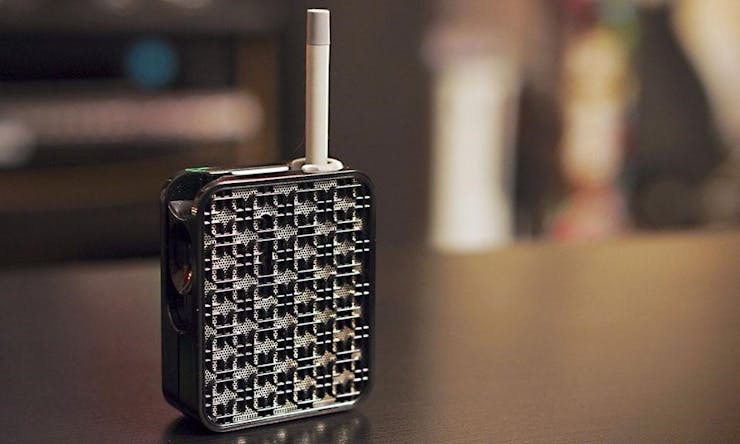As the cannabis industry grows, more and more ingestion methods pop up with increasing quality and product diversity. One of them is vaping, which has gained popularity over the years. If you’re thinking of purchasing a vaporizer, there are four important considerations to keep in mind. Fortunately, we’ve highlighted them below to help you make a more informed purchasing decision. Good luck!
Flower vs. Concentrate

This is probably the number one question you’ll want to ask yourself: “Do I want to refill with cannabis flower or concentrate?” If you enjoy smoking and are planning on splitting time between your vaporizer and, say, rolling papers, you will probably want a vaporizer that takes loose leaf so you don’t have to purchase both flower and concentrates. If you are planning on ditching smoking for vaporizing (perhaps due to health concerns associated with smoking), you can commit full-time to concentrates unabashedly.
From an economic standpoint, the two are different beasts. Concentrate cartridges run at about $40 a pop and provide anywhere from 100 to 200 pulls from the pen, whereas flower vapes operate by the traditional “bowl” system: the chamber is comparable to an average-sized bowl, with the cost of filling dependent upon the cannabis strain, quality, provider, etc.
Keep in mind that in terms of strain selection, in today’s market, flowers offer a much greater variety than concentrates. So if you’re a connoisseur of sorts, a loose leaf vaporizer will still provide you with that exploration/experience. However, market growth is expected to be vast and fast, so the future is bright for concentrate fans.
Efficiency

Didn’t think you’d ever need to recall the difference between conduction and convection, did you? Turns out Chem 101 was useful for, if nothing else, making an informed loose leaf vaporizer purchase. Conduction and convection describe heat transfer: conduction is motionless (think metal against metal), whereas convection requires liquid or gas to move the energy (think steam).
A good example of a conduction vaporizer is the Pax by Ploom, which uses a metal chamber to heat ground flower. Alternatively, the Firefly is a convection vaporizer that heats the flower with hot air. Convective vaporizers are — in theory — more efficient; conductive heating (using a metal chamber) is often uneven (flower touching the chamber walls will receive more heat than flower in the center of the chamber) and inefficient (they heat continuously, even when you aren’t inhaling, which can waste flower).
Depending on how tightly you pack the conduction vape chamber, you may have to stir the flower after a couple pulls to achieve even heating. However, this point is moot if you’re going with concentrates, which have already eliminated the need to decarboxylate (or “activate”) the cannabinoids. If environmental stewardship is of importance, loose leaf vapes are clearly superior with less plastic waste and without the chemical extraction process.
Shop highly rated dispensaries near you
Showing you dispensaries nearConvenience

This comes down to how you want to use your vaporizer. If it’s a quick, on-the-go, one-two puff you prefer, concentrates make a lot of sense: there is no heating time, and vape pens are usually small and inconspicuous. Alternatively, if you’re looking to hold group sessions or only vape at home, a loose leaf flower vape that requires heating time makes a lot of sense.
Preparing the device is an important consideration: for loose leaf vaporizers, the chamber must be loaded before every use with ground flower (don’t forget your grinder), and the vape should be cleaned regularly. Concentrates can go either way: some take screw-in, disposable cartridges while others require loading (that can be messy), although refills are needed infrequently.
Battery life and recharge time are also important considerations; battery-run loose leaf vaporizers have an on-off switch and continuously drain power while they’re on, with a charge life comparable to a laptop. Alternatively, most vape pens do not have an on-off switch and only use power when you are vaping, reducing the frequency of recharging.
Along those same lines, if portability isn’t a factor, an entire subset of plug-in, stationary vaporizers become viable options.
Experience

This one is for the connoisseurs. If the experience of smoking is a great joy for you, it’s likely you have a large interest in the taste and smell of the plant. Each vaporizer on the market today comes with an added unavoidable taste and smell that will factor into your experience. As with smoking methods, trial and error is the best method for finding the vape that fits your palate, but in general, loose leaf vapes provide a stronger taste than concentrates.
Further, the smell of flower that has already been vaped is potent and often objectionable, meaning you’ll want to empty your loose leaf chamber shortly after each use, which is not a concern for concentrates. Lastly, many people covet the headiness that comes with smoking. Vaping, aligning with the cleaner method it is, produces lighter effects. This can be good or bad depending on what you’re looking for — for some this means clearer effects; for others it means weaker effects.
Are there any vaporizers you’ve grown to love and would like to recommend? We’d love to hear your thoughts!
photo credit: mattystevenson via photopincc





